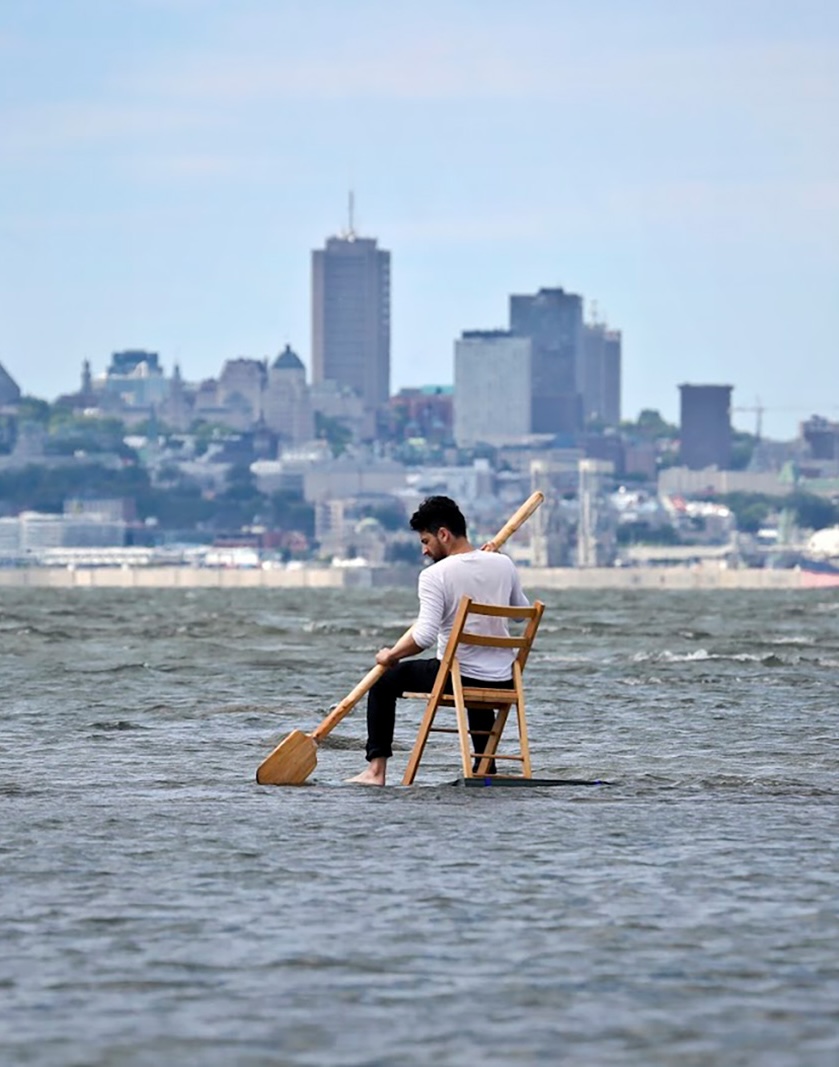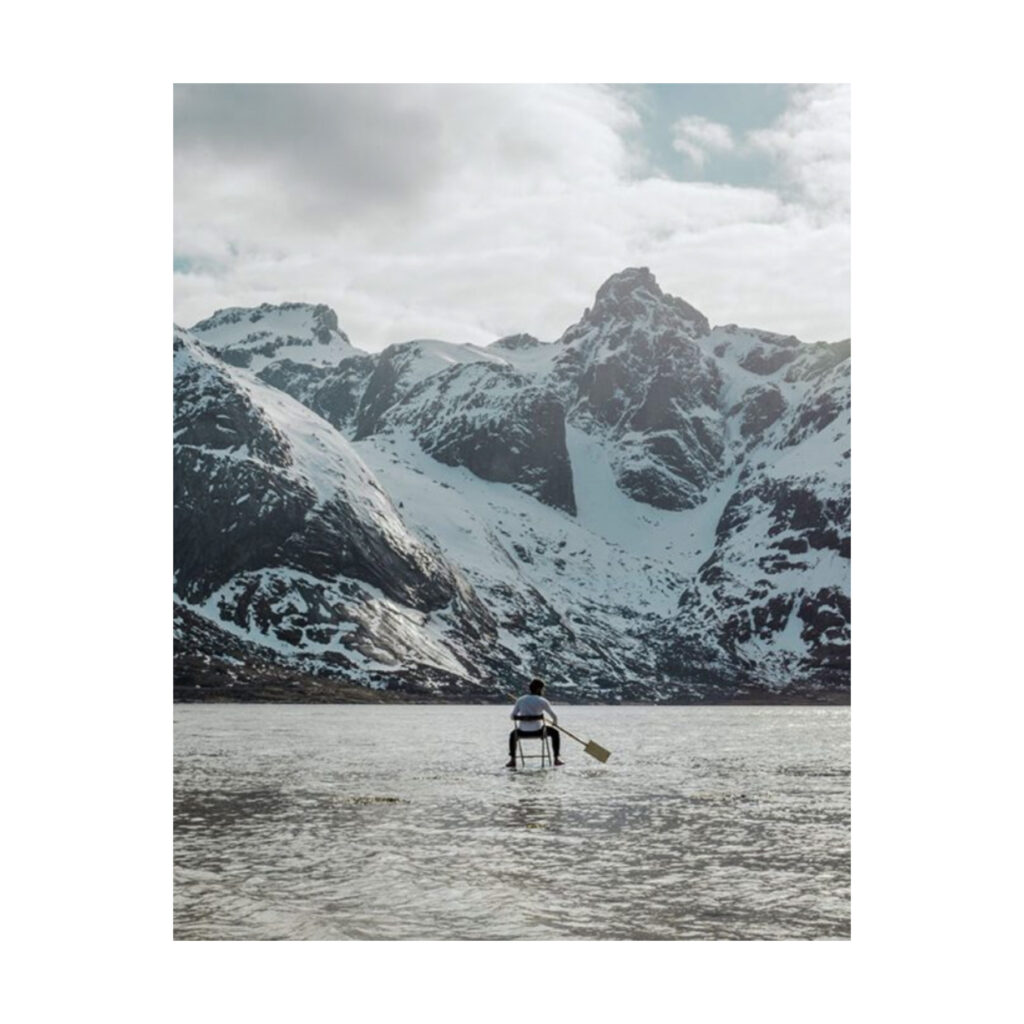
Driftless embraces various seascapes as open and public sites for artistic interventions. In this video installation, a performer travels across large bodies of water while drifting away in a precarious raft that references makeshift strategies for border crossing. This cinematic and performative journey across the planet creates a visual narrative that borrows from migration stories and explores the ocean as post-national negative territory through acts of radical seafaring.
In 2012 I attempted to build the smallest boat that could hold only one person’s weight. As a result, I devised a precarious way to navigate through large bodies of water using generic construction materials and a chair, while confronting unruly seascapes from within. This gesture became an eight-year durational performance and then a film, which started in lake Wesserunsett in Main (Northeast of the USA) and then was re-enacted in places like the Pacific Coast of Colombia, Mexico, California, England, Italy, Norway, Sweden, Philippines and Australia among many. The film ‘wanders-through’ large bodies of water at the margins of modern life and where notions of nationhood appear as mere modes of contemporary confinement. Through a derive, which blurs borderlines and even the natural features of radically different locations around the world, this journey traverses not only space but also nature-culture relations by exposing the paradoxes of a territorial system that desperately seeks to restrict human movement while constantly increasing its reliance on transportation networks and migrant labor.

This performance began in lake Wesserunsett in Main (North East of the USA) and then was been re-enacted in places like the Pacific Coast of Colombia, Mexico, California, England, Italy, Norway, Sweden, Philippines and Australia among others. The film wonders-through waterways, trespassing borderlines and rendering nationhood as a form of contemporary confinement. Meanwhile, the performer interacts with the ocean as an unlikely context for artistic interventions. Through a derive that blurs borderlines and even the natural and geological features of radically different locations around the world, this journey traverses not only space but also temporalities by exposing the complexity of a political system that restricts human movement while expanding its networks for the transportation of goods.
In this work, a performer travels across large bodies of water and through ten countries, while drifting away in a precarious raft that references make-shit strategies for border crossing, migration and radical seafaring.
As Nicolas Borrieaud refers in his book the Radicant: The artist has become the prototype of the contemporary traveler, homo viator, whose passage through signs and formats highlights a contemporary experience of mobility, displacement, crossing.
But this leaves us with the question: What are the modalities and figures of this mobility within art forms and dimension of the public? Borrieaud offers an answer:
The Journey has become. A form in its own right, the bearer of a visual matrix that is gradually replacing the ad-like frontality of pop art and the documentary enumeration of conceptual art. The emergence of the journey as a compositional principle has its source in a cluster of phenomena that form part of a sociology of our visual environment: globalization, the transformation of tourism into an everyday phenomenon and the advent of the computer screen.
Then, perhaps the artwork here is the journey, or the performance. Even the documentation of the work takes its own cinematic form. However, the journey is not just through landscapes but through the layers of meaning separating the land and sea, sites and non-sites, public and publicness. In this work the journey is the material and the form, reflecting also on today’s artistic mobility vs. migration, the complexities of landscape representations and the paradoxical search for sublime imagery in today’s volatile cultural and political climate.
• The Radicant, Nicolas Borrieaud. Sternberg Press. 2009
2012 – 2019: Performance
2012 – 2022: Film Production
Public Collections: Taoyuan Museum of Fine Arts. Taoyuan City, Taiwan